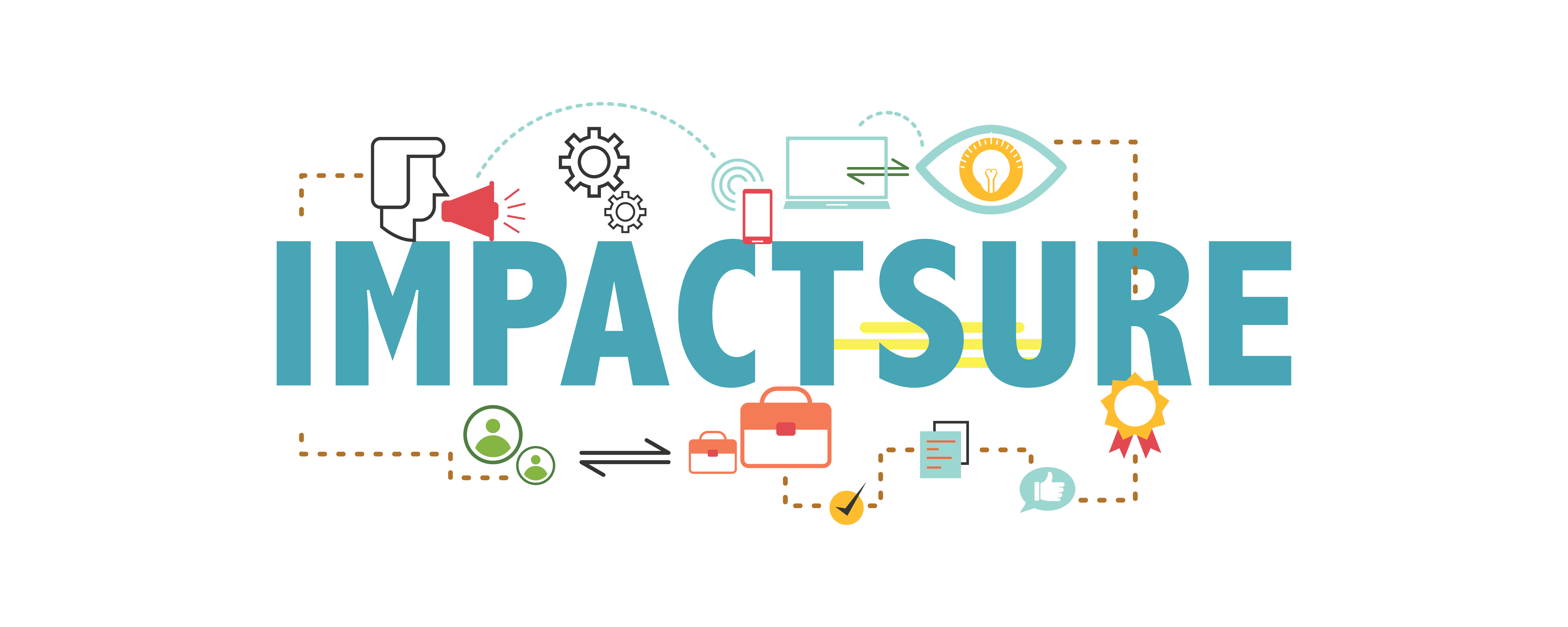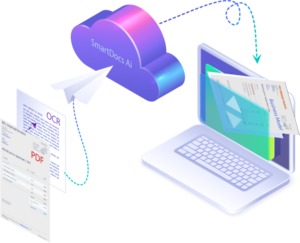IMPLEMENTING ROBOTIC PROCESS AUTOMATION FOR LONG-TERM SUCCESS IMPACTSURE TECHNOLOGIES PRIVATE LIMITED Mumbai, INDIA. www.impactsure.com | Email: sureask@impactsure.com | Phone: +91 9819825677
T H E R I S E O F T H E B O T S
Robotic Process Automation. These three words give a sense of utopia to manage workflows, improve accuracy, reduce operational costs, and meet the growing needs of business and operations teams. A study by a leading consulting firm stated that 78% of organizations that have implemented RPA expect to increase investment in RPA over the next three years. Anecdotal evidence suggests that about 50% of RPA projects are at risk of failure due to
i. low visibility on existing processes to automate and
ii. lack of familiarity with available RPA vendor solutions.
While it is true that there are many benefits to be gained by adopting RPA, experience shows that the judicious application of tools is as important, if not more than choosing the most popular tool of the season. RPA Maintenance Risk High Maintenance, Need Human intervention Accuracy, Fails during Peak / critical hours Increasing License cost Change ManagementSo, how does a leader involved in running an enterprise where the business and operations run on complex technology make the right decision that fits the context of the business?
W H A T W E L E A R N T F R O M O U R A S S I G N M E N T S
When it comes to solving business and operational challenges, it is often the IT leaders who are asked to evaluate and recommend the appropriate tools. Of course, the functional users are an important part of the selection process, usually, the responsibility of selecting the “right” tool, falls on the IT leadership to make the right choice from a long-term maintainability point of view. Having spoken with the IT heads of leading financial institutions in APAC and Europe, we learned that the challenge is not about the tool but identifying the context in which the tool was being used.
1 https://www2.deloitte.com/bg/en/pages/technology/articles/deloitte-global-rpa-survey-2018.html
Let’s look at the basic definition of RPA. “Robotic Process Automation is a technology that automates repetitive tasks by mimicking human actions.” Focusing on the definition helps to keep our eyes on the end objective and not get distracted by the feature set of the latest tool. Identifying the ‘low-hanging fruit’ or easily automatable use cases is the key to implementing RPA successfully. Ideal use cases are repetitive, manual, structured, and logical tasks that lend themselves easily to automation. Investing in RPA is more than a one-time financial investment. It involves bringing people, process and together in such a way that the benefits and savings from investing in RPA tools are continuous and sustainable over a period of time. Different stakeholders in the enterprise have different perspectives on RPA. The leadership may see it as an initiative that increases operational efficiency whereas employees performing that activity may see it as a threat to their jobs. Therefore, it is advisable to approach such transformative initiatives sensitively. An organizational culture that promotes a growth mindset where people are encouraged to upskill and reskill supported by the management’s buy-in for automation is the ideal ground for successful RPA implementations. Ask introspective questions Some of the questions that we find useful in helping business, operations, and IT leaders think deeper about their particular situations are listed below. Business •What is the business justification for the investment in RPA?
•How does the pricing for the tool work? Is it per bot or per application?
•Are you investing in RPA to overcome manpower shortages?
•What is the Total Cost of Ownership?
•Are the tasks you are looking to automate front-office tasks or back-office tasks?
•Are you looking at automating a single activity or a whole process?
•Are the processes that you expect to automate subject to change?
•How often are the changes likely to occur? •Do you have to rely on the vendor or vendor-trained staff to help you make changes or can you do it yourself with in-house expertise?
•How do you make changes once the process changes?
•What about data security and compliance requirements?
•Does the tool have a macro recorder that records how the user navigates or do you have to build your own logic?
•Does the tool that you propose to use work directly on the application or does it work on mobile or web browsers?
•Does the tool have a visual designer where you can see the process flows or do you have to script it line by line without a visual representation?
• Is your organization culturally ready for RPA?
•Will your people understand the reason for investing in RPA or will they feel threatened?
•Do you have people who can manage the system once it is deployed? •Will you have the technical manpower to help maintain and enhance these systems? Answers to these questions will trigger interesting conversations and help to build the RPA strategy with a sharp focus on execution capability. This will ultimately result in implementing the most practical solution that saves time, effort, and money at the task, process, and business levels.
A S U M M A R Y O F O U R F I N D I N G S
When we think in the context of these questions, we get a deeper understanding of what our expectations from RPA are. As expected, we did not get direct answers. Some of the simpler, easier decisions were around Standardized tasks. Support Customized process?, Maintenance cost? , the following lines of thought Change request? Impact analysis? Bot Downtime? Scalable? Standardized tasks vs. customized processes If your automation needs are not specific, an off-the-shelf RPA tool with a ‘configurable pre-built pack’ may be right for you.
Complex processes may require a more consultative approach for the selection and implementation of the appropriate tool because the solution has to integrate with other upstream and downstream tools in the process. Maintenance and support Maintenance and support turn out to be critical issues in the long-term commercial success of the RPA investment. Organizations that want to maintain, update and manage their upcoming processes must ensure that they have access to a pool of talent that can manage the newly implemented system. We have come across situations where the RPA solution provider had automated complex processes that required extensive coding and customization. After the initial implementation, the reliance on external IT providers was higher than expected and costs went beyond the budget. The unforeseen recurring costs involved in maintenance and support resulted in almost scrapping the entire project. Change requests, impact analysis, and downtime One of the findings that surprised us was that there was a significant downtime ranging from 1 to 10 days depending on new functional changes or regulatory changes. When these changes are required, manual, time-consuming impact analyses need to be performed, the bot is taken off production, modified, tested, and then redeployed. Keeping the bots functional over a long period of time becomes more and more complex and unwieldy leading to maintenance and support issues in due course. Start small and expand slowly based on the results observed over a period of time from 6 to 12 months. Think of scalability in terms of increasing the number of bots. To truly benefit from RPA, one needs to expand RPA to more processes across the organization to leverage economies of scale. This is where it becomes important to consider whether it is feasible for the organization to centrally manage the RPA solution in-house.
Are integrated solutions right for you?
Look beyond the immediate short-term benefits of RPA. In the short term, RPA can easily automate rule-based tasks and deliver positive ROI.
It is more challenging to automate complex tasks like data extraction from documents with RPA. While it is possible for RPA providers to offer integrated solutions, they may not be the best fit for your specific use cases. Are test automation tools appropriate for RPA? Popular test automation tools like Selenium, Cucumber, Cypress, Robot Framework, TestComplete, and SmartBear are cited to be alternatives for RPA tools. We found that projects, where test automation tools were being used in place of RPA tools, were not successful because of the following reasons
i. Test automation tools are not designed to run in production environments ii. Test automation tools run on synthetic or control test data and not on production data iii. Test automation tools do not provide auditable logs that are suitable for production environments
In short, test automation tools and RPA tools are built to achieve different purposes. Test automation helps to verify that a process works whereas RPA helps to complete a process in the live environment.
Be confident of your decision
So how do you test if the solution works for you or not? Begin with a Proof of Concept and extend it into a pilot engagement. The pilot engagement can have targets regarding the accuracy and quantity of transactions.
P A Y A T T E N T I O N T O D A T A S E C U R I T Y A N D C O M P L I A N C E
Practitioners say that RPA software reduces human contact with customers’ sensitive information and helps to reduce security risks and improves compliance with new regulations. While this is true, it is advisable to run an independent security audit on the RPA solution that has been implemented so that security vulnerabilities, if any, are identified, and adequate precautions can be taken.
C O N S I D E R A C U S T O M I S E D A P P R O A C H F O R Y O U R S P E C I F I C N E E D S
Decide the main business outcomes first – then work out the best ways to achieve them. Instead of deciding to invest in RPA based on the features of available tools, it is worth considering a holistic approach. Examine your existing technology landscape, workflow, and business processes. Keeping this in mind, look at how the desired outcomes can be obtained from both operational and technological perspectives. With this approach, it becomes easy to find solutions that go beyond tool selection. Some of the key points that this approach entails are: 1. Assess each step of the business process 5. Customize 4. 1. Assess 2. identify Customized RPA 3. Evaluate 2. Identify the gaps and see how the gaps can be addressed Analyze 3. Analyze other complementary solutions in the process workflow- for example ERP systems or workflow automation systems 4. Evaluate RPA tools that best fit the use cases and the technology landscape of the organization 5. Customize the base RPA tools with Intelligent Automation so that the solution becomes more inclusive and comprehensive. RPA- the power of ML and NLP Customizations makes it possible to use ML and NLP to create intelligent automated process workflows. These solutions go beyond the capabilities of rule-based engines to automate repetitive tasks. The possibilities to enhance RPA-enabled processes with AI for image recognition, voice and facial recognition, voice assistants, data extraction, and analysis are many. By adopting cognitive reasoning engines to apply the data extracted from learned patterns to make business and operational suggestions, AI’s ability to aggregate, manage, and understand unstructured data makes RPA much more effective in handling a wider range of processes or activities. When AI is integrated with RPA, it allows the automation process to begin much faster and continue in a seamless manner. In terms of use cases, this could be as simple as reducing the turnaround time on processing complex documents during non-business hours.
I M P A C T S U R E ’ S A P P R O A C H
Are the tools suitable for the context? RPA is the trending solution today and Impactsure believes that it is important to approach RPA implementation with a holistic and practical outlook. We believe that each toolset has its unique benefits for the use cases being considered. The adjoining diagram provides a snapshot of the comparison of a few leading tools prepared by a leading analyst. Tools built for RPA have distinct advantages over test automation tools like Selenium, Cucumber, Cypress, Robot Framework, TestComplete, and SmartBear. Experts recommend using RPA tools specifically built for live environments rather than using test automation tools that are built for test environments.
Comparable features- high level
The following table provides an outline of the key characteristics of popular tools. It is compiled from anecdotal evidence gathered from discussions with practitioners and is intended to serve as a point of discussion while considering a tool. The viability of these tools will change based on the use cases being considered. There are many other tools that we have not considered here.
| Tool | RPA Blue Prism | UiPath | Automation Anywhere | Kofax Kapow | NICE |
| Reusability | | | | | |
| Recorders (Macro Readers) | | | | | |
| User-friendliness | ● | ● | ◑ | ● | ◑ |
| Reliability | ● | ◑ | ● | ◔ | ◑ |
| Cognitive Capability | ◔ | ◔ | ◑ | ◑ | ◔ |
| Operational Scalability | High execution speed | Average performance | Limited large-scale deployment | Easily scalable | Fast execution and seamlessly scalable |
| Pricing per user or license (indicative) | USD 17,000 to USD 20,000 per year | Starts at USD 420 per user per month | Cloud starter pack starts at USD 750 per month | Custom pricing | Custom pricing |
As you can see, there are many parameters to consider before deciding on the most suitable RPA strategy. At Impactsure, we have devised a framework that is designed to deliver easy wins by automating easily automatable use cases while setting the stage to automate more complex workflows with intelligent RPA.
SureAutomate Framework for RPA strategy
Depending on the business and operational goals of the organization, we are aware that the capabilities of a tool may need to be enhanced with intelligent automation. How would we implement Intelligent RPA (RPA+AI/ML) solutions? We analyze options based on qualitative and quantitative options which cover two aspects-
• Maturity of the RPA tool
• The business value that can be generated
The model is described below:
While the above framework is a guideline for our strategy, we work closely with our clients to derive the optimal techno-commercial model for business, operational, and IT requirements.
T H E R O A D A H E A D
RPA technology is based on rules. The success of RPA is dependent on how well the bots are built. Bots are like the new employees on the team. The performance of a bot will depend on how well its rules have been ‘written.’ In this context, it becomes very important to understand the nuances of the single task or the entire process so that the bot can be trained effectively to navigate through the process.
<ahref=”https://www.freepik.com/vectors/ai-technology”>Ai technology vector created by freepik – www.freepik.com</a>
In this context, it becomes very important to understand the nuances of the single task or the entire process so that the bot can be trained effectively to navigate through the process. Finally, it is all up to the people involved. Those who build the bots and those who maintain and update the applications need to communicate clearly with each other and work together as a team to ensure that the stated objectives of the RPA initiative are met. It is only then that the benefits of high accuracy and reduced costs can be realized while delivering increased revenues and enhanced customer experiences.
ABOUT IMPACTSURE TECHNOLOGIES PRIVATE LIMITED
Impactsure helps people Interpret Information. Intelligently, Insightfully. Our products and solutions help people manage volumes of ever-growing documents and data and enable them to continuously adopt efficient ways to work with a focus on taking decisions with confidence while ensuring higher levels of accuracy and reliability.www.impactsure.com | Email: sureask@impactsure.com | Phone: +91 9819825677
©2022 Impactsure Technologies Private Limited, India.
Disclaimer: This report has been published for information and illustrative purposes only and is not intended to serve as advice of any nature whatsoever. This report also contains information available in the public domain, created and maintained by private and public organizations. Impactsure acknowledges the proprietary rights of other companies and entities to the trademarks, product names and such other intellectual property rights.





